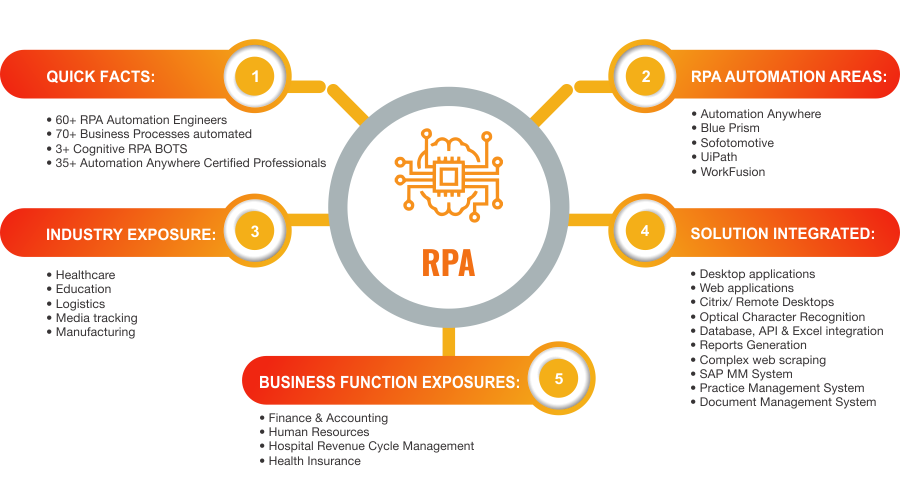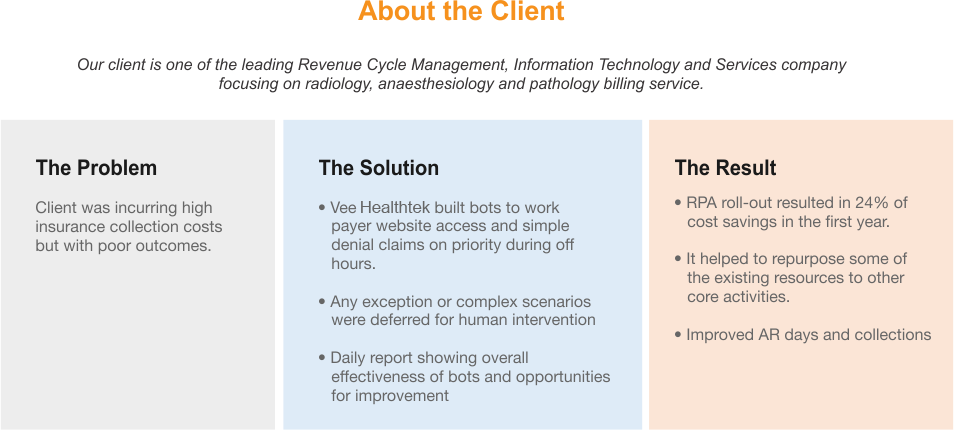In his white paper, Roopesh Shetty, Vice President Client Solutions Operations, examines the benefits of robotic processing automation (RPA) in the healthcare industry. In particular, Roopesh addresses common concerns regarding RPA and why the positives outweigh any negatives.
Please click on the video to the right to learn more about Roopesh, his paper’s key points, and his interest in RPA subject.
To discuss this white paper further, please contact Roopesh using his information provided at the end of the article.
Almost 50% of U.S. healthcare providers plan to increase their spending on RPA in the next three years. The COVID-19 pandemic situation put additional emphasis on optimizing cost and addressing the scarcity of resources.
Technology administered to manage business logic organized inputs is intended to automate business processes. RPA technology combines user interface and workflow execution. It joins human actions, such as mouse clicks and keystrokes, with workflow and business rules to generate a meaningful outcome.
Operating costs continue to be one of the significant expenditures in hospitals and healthcare institutions. Due to the pandemic, most healthcare players have witnessed a substantial dip in their revenue because of a drop in volume. It is critical for these organizations to identify opportunities and processes to improve overall efficiency and reduce cost.
RPA combined with artificial intelligence and machine learning can manage some of the complex business tasks that are time-consuming and involve a fair amount of human effort. RPA will help to optimize the cost and output, enabling resources to focus on complex and high-value tasks.
Vee Healthtek has a large team of certified RPA engineers working closely with clients to identify processes and opportunities to implement RPA technology. Vee Healthtek has experience working with several RPA platforms across multiple industries.

Vee Healthtek RPA Center of Excellence (COE)
One of our large healthcare clients contacted Vee Healthtek to demonstrate our capabilities on RPA. In a week, our team put together a demo bot aligning with the client process requirement. After an initial review of the specification and efforts involved, we demonstrated a 35% overall improved efficiency.
The ROI is dependent on the process and efforts involved, varying for different processes and clients. Given our experience and projects we have worked in healthcare processes, our team is confident of showing a minimum 15% improvement in process efficiency.


There is no off-the-shelf product when it comes to RPA, and even for similar industries and processes, the workflow and efforts vary from client to client. One must understand the requirements, business rules, workflow system, and activities clearly, along with the minimum advantage and ROI we can realize by implementing bots.
The initial due diligence and meeting of the minds may take a while, and it requires patience that is key to the success of RPA.